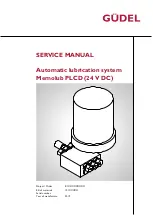
Chapter 6
Calibration
6-2
www.ni.com
Using a multiranging 8.5-digit digital multimeter (DMM) you can perform
the necessary calibrations.
To make sure that the DMM does not introduce an additional offset error,
you can determine the offset error of the DMM by shorting its leads
together and reading the measured value. You must subtract this value, the
DMM offset, from all subsequent measurements.
You need to measure the output between MCH0+ and MCH0– of the
module. To access these pins, connect an NB1 50-pin ribbon cable from a
CB-50 I/O connector block to the module rear signal connector or to a rear
signal cable adapter such as an SCXI-1349. Then connect to MCH0+ and
MCH0– on the CB-50 pins 3 and 4, respectively.
Gain and Offset Calibration
For two-point calibration, it is best to use input voltages that correspond to
the signal range of interest. For example, if you are planning to measure
bipolar voltages over the full input range of the module, choose –42 V
(negative full-scale) and +42 V (positive full-scale) as your two input
voltages. If you are only concerned with offset error, short the input
terminals and perform a one-point calibration on the channel using the
SCXI_Cal_Constants
NI-DAQ function or equivalent VI as described in
your software documentation. To determine the offset and gain calibration
factors of the SCXI-1104/C module for a given channel, perform the
following steps for a two-point calibration:
1.
Select the desired channel.
2.
Apply the input for the first calibration point. To select negative full
scale as the calibration point, apply –42 V for an input voltage.
a.
Apply the input voltage to the channel selected in step 1.
Note
To make one of your calibration points be the zero point, connect the positive and
negative channel leads to one of the chassis ground pins on the front connector or terminal
block.
b.
Measure the input voltage with the DMM. Call the measured
voltage
input1
.
Note
If you are using a calibrator that supplies accurate voltages, you can simply use the
known applied voltage for
input1
instead of measuring it.
c.
Measure the module output between MCH0+ and MCH0– with
the DMM. Call the measured voltage
output1
.
















































